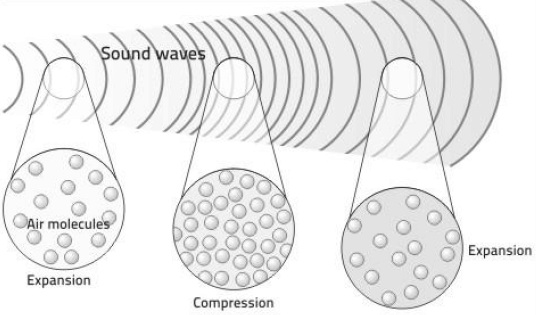If you touch a temple bell after ringing it, you would feel it vibrating-and vibration is due to the production of sound. The ringing temple bell passes on its vibrations to the surrounding air. It compresses the air as it moves outwards. Then it moves back, and the air expands back to occupy the space which its contracting side has left.

The air in the immediate vicinity of the vibrating object itself passes on the vibrations to air adjacent to it, and in this way, the vibrations spread out from the source in all directions. These vibrations, which travel through the air are what we call sound waves. We hear them as sound when they strike our eardrums and cause them to vibrate. The vibrating eardrums send impulses to the brain, which interprets them as sound. Sound waves travel in other things besides air-in water, for example. Surprisingly enough it travels faster in Water than in air-more than four times as much. In fact, the denser the medium sound travels in, the higher its speed. It does not travel in a vacuum, of Course, because there is no medium present to pass on the vibrating.
Speed of sound in various Medium
| Medium | Speed (metres/second) | Speed (km/hour) |
|---|---|---|
| Air at 15° C | 340 | 1224 |
| Distilled water at 25° C | 1496 | 5385 |
| Sea water at 25° C | 1531 | 5511 |
| Brick | 3650 | 13140 |
| Wood | 4110 | 14796 |
| Glass | 4540 | 16344 |
| Aluminium | 5000 | 18000 |
| Steel | 5200 | 18720 |